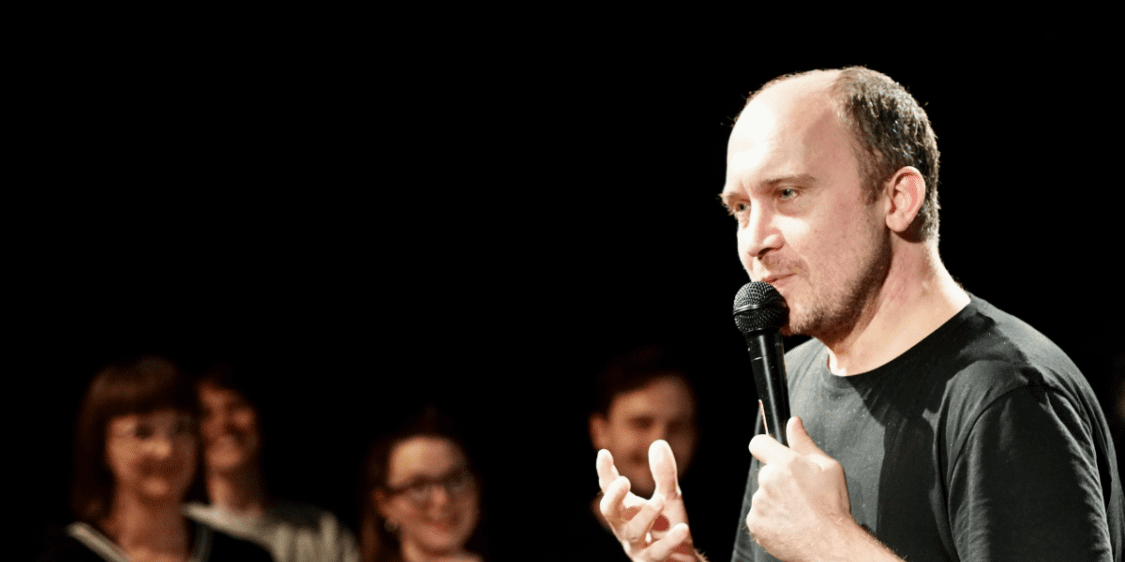With the recent intense coverage of ‘Oppenheimer’, nuclear weapons are very much back under public scrutiny; so there is certainly an opening for a show which looks seriously at the issues from a different perspective. Unfortunately this strange confection is not it.
Chris Thorpe has a agreeable manner and a ready ability to engage with and stimulate audiences. You can understand easily why he has won many Fringe awards. However, this is not a stand-up comedy routine, but nor is it a rigorously structured lecture about the dangers of nuclear weapons. Instead, over a far-too-long ninety minutes we are part of a patchwork of disparate elements that do not coalesce into a coherent show. While some elements have individual interest, the evening is never more than a sum of its parts.
Thorpe arranges the theatre in the round and assembles a very simple layout in the centre – a rug, a desk and chair, with laptop linked to a screen at the back. There is a pot plant for no apparent reason, and various tubes of biscuits to reward audience members who answer questions correctly. We began with a series of Spotify music choices from the audience before Thorpe set out a series of facts about nuclear proliferation and the scope and number of warheads. He detailed his experience of the latest conference associated with the treaty on the prohibition of nuclear weapons, and we had a brief appearance on zoom from Veronique Christory, a friend of Thorpe’s, who is senior arms adviser for the Red Cross. With the lights extinguished, he ran through possible scenarios for nuclear obliteration initiated by the conflict in Ukraine. Perhaps the most chilling moment was his interaction with a website called ‘Nukemaps’, which allowed the user to gauge the impact of particular weapons with different payloads on certain locations – in this case with the Royal Court at the epicentre.
The trouble is that beyond the recitation of sobering facts and an admixture of amiable banter, this show breaks no real new ground. The one new claim here – that nuclear prevention is best approached through galvanising non-nuclear states – seems over-idealistic. The grim realities of Hiroshima are well known, as is the fact that all future nuclear detonations would be of a wholly different order of magnitude. Nor do the arguments in favour of nuclear deterrence, still confidently presented in many diplomatic circles, get a clear or detailed refutation.
This is hugely important subject, and Thorpe’s instincts are in the right place; but this show is not crafted well enough for the theatre, either in its structure or presentation, to justify itself.

